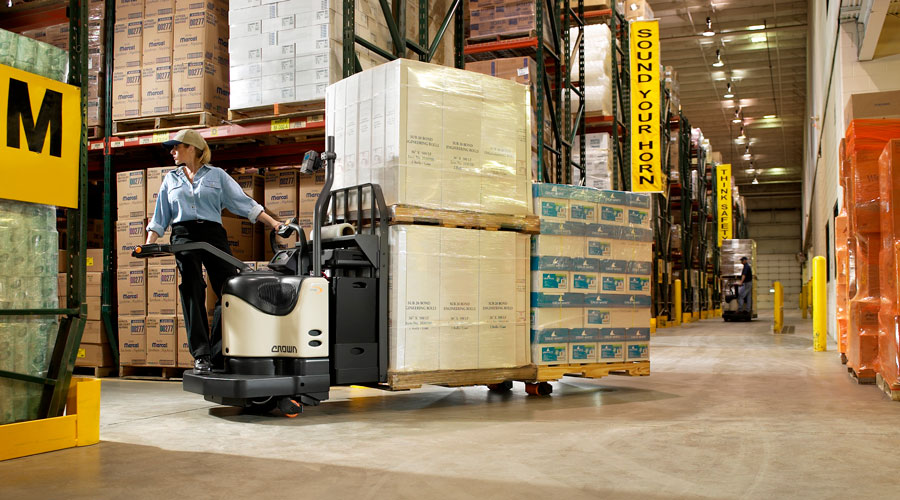Five Steps to Promoting Safety in Palletized Storage Environments

A comprehensive approach to warehouse design can help enhance safety by enabling a broader view of safety management. This approach considers various components of the warehouse environment, including but not limited to forklifts. Integrating these different components into a holistic safety strategy can help reduce injuries, minimize equipment and product damage, and establish a strong, safety-focused culture.
These five warehouse design components can contribute to a robust safety program:
1. Racking Protection
There are several methods used to protect the integrity of your racking structure, starting with proactive measures such as upright column reinforcements and steel column protection units. These protections can keep racks in good working order while also protecting products and forklifts. It is also important to conduct regular rack assessments to identify any damaged areas.
2. Product Fall Protection
Racks should be outfitted to support the products they store safely. The size and weight of the stored product may warrant the installation of heavy-duty wire rack back protection or netting to provide a barrier that helps prevent materials from falling from the rack. Load supports may also be helpful. Placed under a pallet, these are designed to preserve the structural integrity of heavy-loaded shelves, helping to prevent pallets from falling through or between load beams.
3. Clear, Defined Pedestrian Walkways
Safe routing of foot traffic is an OSHA-required component of warehouse safety, separating pedestrians from vehicles to limit potential encounters. While OSHA-compliant barricades, line painting, and aisle marking tape are still most common for designating walking paths, some warehouses are moving to the more flexible alternative of laser or LED line projectors. These methods allow for easy repositioning as warehouse environments change. Both forklift operators and pedestrians must be aware of designated walkways.
4. Secure, Flexible Signage
Physical signage is among the most common safety assets in the warehouse. Signs identifying designated walkways and alerting to potential safety hazards like low overhangs, are more effective when strategically placed in a well-lit, clearly visible location. Physical signage should be inspected periodically to confirm its presence in designated locations and to assess damage that may warrant replacement. Some warehouses are moving to more flexible ceiling-mounted projectors to display virtual signage that can be modified quickly and easily.
5. Rack Capacity Limits
Clearly displayed rack capacity labels can help ensure the rack is properly matched to the weight of its stored inventory. Capacity labels are often placed on the beam directly under a pallet location. Affixing these labels to the rack upright may improve their visibility and allow for easier scanning, helping to avoid damage and facilitate more productive pallet movement.
As a single-source supplier, Crown Equipment can help organizations develop and implement a more holistic approach to safety, that goes beyond the forklift. Our Warehouse Solutions specialists apply broad industry and application experience to develop an integrated approach that addresses every component of a comprehensive warehouse safety strategy.
For more information on taking a comprehensive approach to warehouse design that goes beyond racking and forklifts, read our new e-book, “Taking a Comprehensive View of Your Warehouse Environment.”